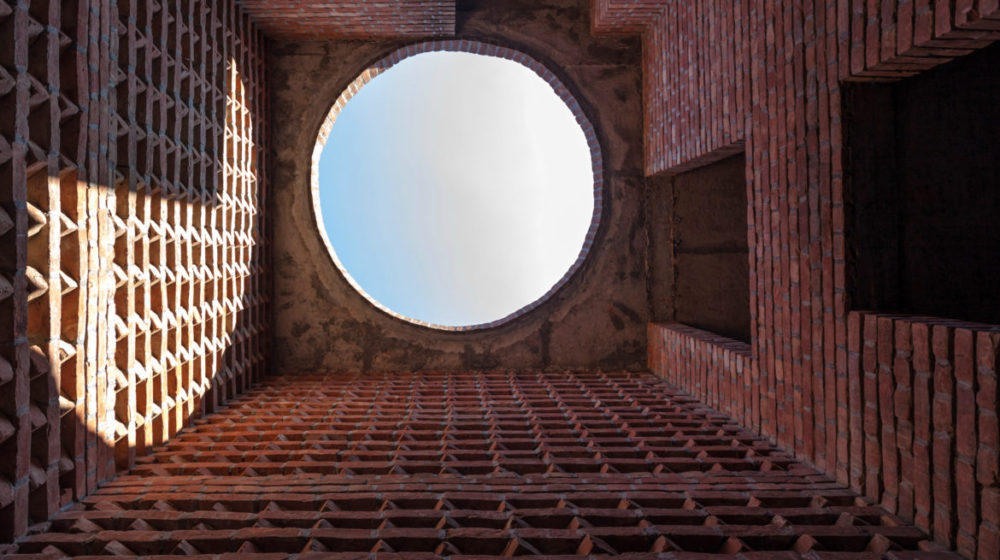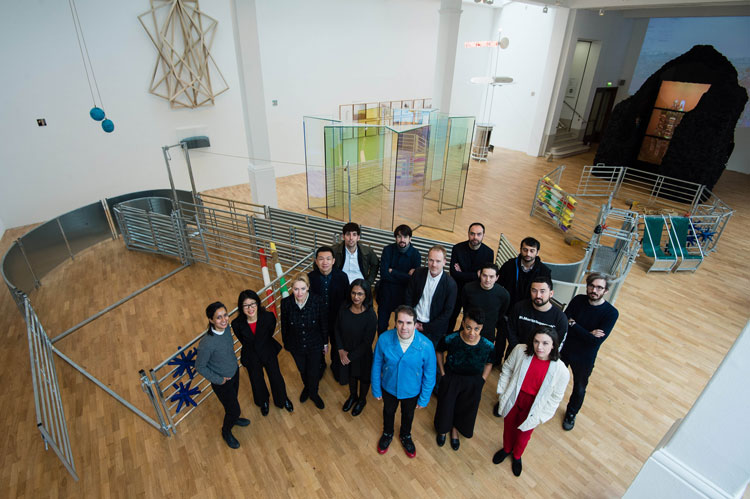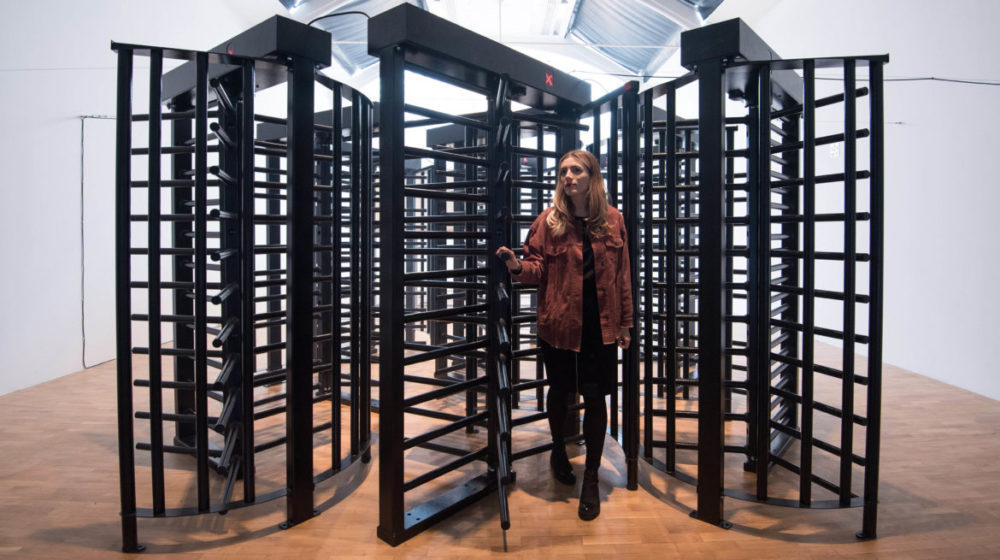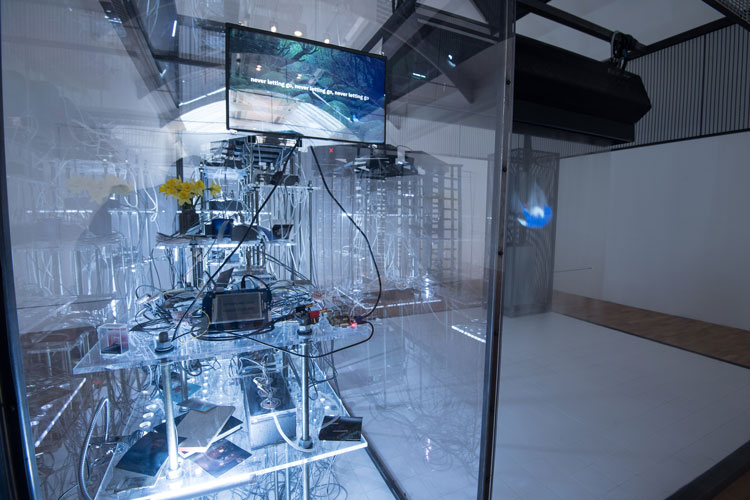Artists and architects create visions of the future
ho
London’s Whitechapel Gallery commissions ten contemporary artists and architects to think together about the future.

1956. London was trying to heal the wounds from WWII through culture and art. The Whitechapel Gallery, still surrounded by bombed buildings, was sure that tomorrow had arrived with an exhibition titled “This is Tomorrow” which became an icon for its experimental, collaborative and amongst all hopeful approach. It was, in fact, a true declaration of principles: the future was that, pairs of artists and architects working together for tomorrow. Amongst the most relevant participant architects, there was Alison y Peter Smithson, Ernö Goldfinger, James Stirling and Theo Crosby. Amongst the artists: Eduardo Paolozzi, Richard Hamilton and Victor Pasmore.
2019. About six decades later, Lydia Yee, senior curator at the same institution, reframes the iconic exhibition with turning it into a question: “Is this tomorrow?”. The show takes the same original premise and presents newly made projects made by pairings of contemporary artists and architects, honouring also the integrative spirit of the Bauhaus in the year of its centennial.
The replication of the original premise gives birth to more or less interesting collaborations, but the most relevant aspects of the experiment are the abysmal and somehow paradoxical differences that pull apart the visions presented in both exhibitions. The original, in a context of post-war depression, looks at the present and the future with optimism, and the modern one, born in a context of apparent progress, offers much less hopeful views of the future. This difference justifies the change from proud affirmation to intriguing interrogation in the title. But despite this unexpected and dark turn, the new show counts on much more equal gender representation, much more global in regards to the birthplace of its participants and more socially engaged.
We highlight five from the ten pieces featured on the new exhibition, which can be visited until May 12th at The Whitechapel Gallery and will travel to the recently opened MAAT (Museum of Art, Architecture and Technology) in Lisbon in 2020.

Enclosure
Architects: 6a (established 2001, UK)
Artist: Amalia Pica (born 1978, Argentina)
6a and Amalia Pica invite the public to enter an animal management system that looks strangely familiar to a kid’s park. The conversation between the pair started with a mutual realisation that humans are part of a global ecology. Their project, in response, aims to materialize the interdependence between species, the mechanisms of control and domination we are exposed to, our connection with the natural world and the need to overcome an anthropocentric vision of the world.

Spirits Roaming on the Earth
Architect: Office for Political Innovation / Andres Jaque (born 1971, Spain)
Artist: Jacolby Satterwhite (born 1986, EUA)
The Spanish architect Andrés Jaque proposes, together with the artist Jacolby Satterwhite, a reflection of today’s most pressing inequalities, which often take place under the surface of what is visible. The tip of a leafy iceberg covered in petroleum black paint projects on its base eight videos that expose an array of contemporary challenges such as the dispute for air-rights in big cities, designer babies, pollution, fracking, queer space or the use of renders on the design of luxury hotels. In another reading level that, consciously, attracts much more attention, the upper projection shows a tower-like jungle full of rooms where sex parties are taking place and two men kissing on top of it.

The Salvator Mundi Experience
Architect: David Kohn Architects (established 2007, UK)
Artist: Simon Fujiwara (born 1982, UK)
David Kohn and Simon Fujiwara’s view of the future is presented through a model of a hypothetical museum inspired by our current, grand and superficial obsession with myths. The museum is conceived to show only one icon, a once lost painting by Leonardo Da Vinci that became the most expensive painting ever sold. Meant to be the star of the new Louvre Abu Dhabi, its presentation, when the museum opened in November 2017, was cancelled last minute, and there aren’t yet new dates for its long-awaited unveiling. Fujiwara and Kohn made a trip to the opening of the museum as a way to get to know each other and discuss their collaboration and this whole situation resonated on them: “Even in its absence, the painting had changed the museum and the city. We wanted to see if there was anything left to say about something that has been so over-narrated and marketed”. The result is a panopticon experience that shows how much our society enjoys telling and watching past stories over and over, and even when there is nothing left to say about them, there will be always new ways to tell them and experience them.

Borders/Inclusivity
Architect: Farshid Moussavi OBE (born 1965, Iran)
Artist: Zineb Sedira (born 1963, Francia)
Touching on the ever-growing systems of control we are exposed to every day, Faschid Moussavi and Zined Sedira have built a maze out of one-way control entrances. If you choose to go in, there is no way to go back even if you regret. A unique path is the only way, forcing us to leave our free will behind.

999 years, 13 sqm (The future belongs to ghosts)
Architect: Rachel Armstrong (born 1966, UK)
Artist: Cécile B. Evans (born 1983, UK)
Architect Rachel Armstrong is known by her experimental – but highly organic- take on architecture. In her collaboration with video artist Cécile B. Evans, they are both creating a fictional view of the future which takes its name from the longest possible lease and the smallest living space and in the UK.
Author: Sol Polo